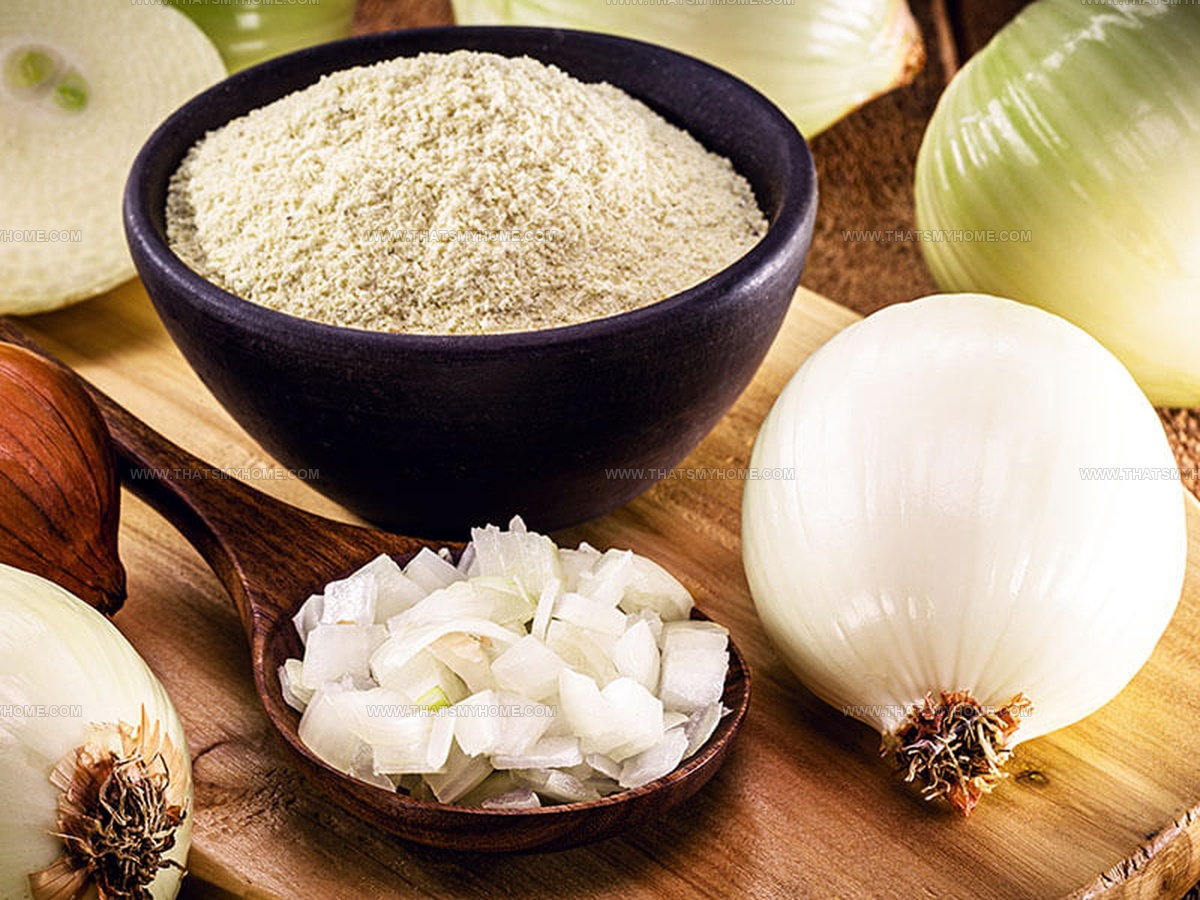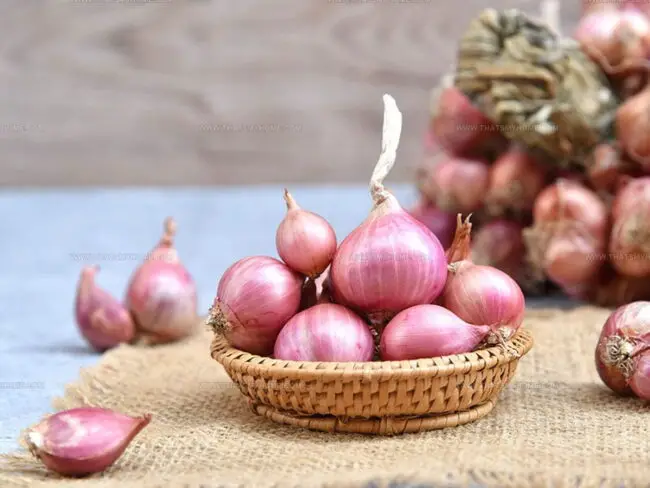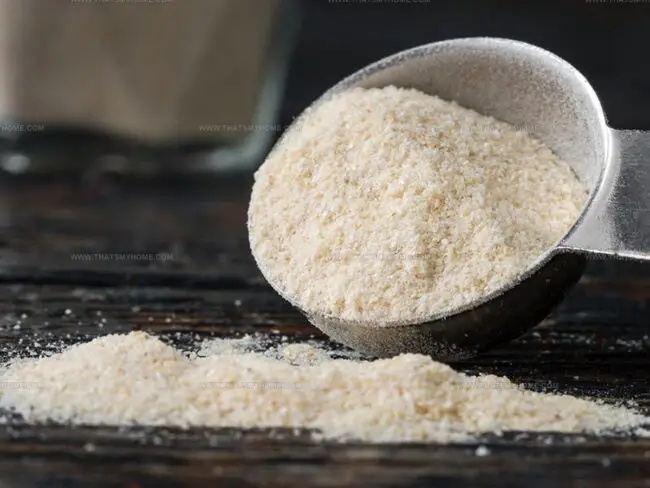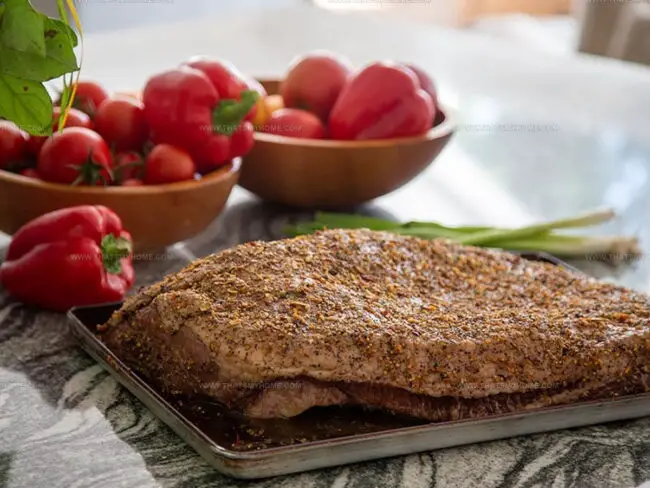Onion Powder or Fresh Onion: Choosing Your Flavor
Onion powder serves as a convenient kitchen staple for home cooks seeking quick flavor solutions.
This fine, dehydrated form delivers concentrated onion taste without the chopping or tears.
Many recipes call for it when texture matters less than pure onion essence.
The shelf-stable nature makes it perfect for pantries and emergency cooking situations.
Both ingredients bring unique qualities to dishes depending on what you need for specific recipes.
Keep reading as we dive into the best applications for each option in your everyday cooking adventures.
A Comprehensive Guide to Onion
Onions are one of the most common and versatile ingredients in cooking worldwide. Known scientifically as Allium cepa, they belong to the Allium family, which also includes garlic, leeks, chives, shallots, and green onions.
Onions are primarily grown for their edible bulbs, which develop underground. These bulbs vary greatly in size, color, and pungency depending on the variety.
Onion plants produce flower stems that grow in clusters. The flowers themselves are small, white-greenish, and quite delicate.
The leaves that grow from the bulbs are long, hollow, and cylindrical.
Onions diverse in flavor, from sweet and mild to sharp and pungent, and color.
They cane be used fresh, dried, powdered, or as flakes.
Common Onion Varieties And Its Usage
Over 600 varieties exist in the onion genus, but I'll focus on just 9 common types organized into three helpful categories. Dry onions include yellow, red, and white varieties, each with distinct cooking properties.
Soft onions encompass sweet onions, green onions, and spring onions, which tend to have milder flavors. Small-sized onions round out the selection with shallots, cipollini onions, and pearl onions - perfect for specific recipes where their unique characteristics shine.
These groupings make it easier to understand which onion works best for different dishes and cooking methods, so you can choose the right one for your recipes.
Several Widely-Used Onion Varieties And Its Usage
Over 600 varieties exist in the onion genus, but I'll focus on just 9 common types organized into three helpful categories, including:
Dry Onions
This table highlights how yellow, red, and white onions differ in appearance, flavor, texture, and best culinary uses, helping you pick the right onion for your recipe.
| Onion Type | Appearance | Flavor & Texture | Cooking Behavior | Common Uses |
| Yellow Onion | Yellow-brown papery skin, white flesh | Pungent, strong flavor; high starch; tears when cutting | Holds shape when cooked; doesn’t dissolve easily | Stews, soups, sautéed, roasted dishes; both raw and cooked |
| Red Onion | Red skin, pale red flesh | Mild sweetness; chewy texture when cooked; may discolor other foods | Crispier if soaked in cold water | Best raw in salads, sandwiches; also good for pickling, braising, frying |
| White Onion | White skin and flesh | Milder and less pungent than yellow onions; can mellow and sweeten with soaking | Cooks quickly; softer texture | Popular raw or quick-cook in Latin and Central American dishes |
Soft Onions
This table shows the comparison of soft onion types: sweet onions, green onions, and spring onions, with their key features and uses:
| Onion Type | Appearance | Flavor & Texture | Cooking Behavior | Common Uses |
| Sweet Onions | Large bulb, pale skin | Mild, sweet flavor due to low sulfur; crispy flesh | Great for roasting, caramelizing; holds shape well | Raw in salads, garnishes, stuffing, roasting, caramelizing |
| Green Onions (Scallions) | Long green stalks, no bulb or very small immature bulb | Mild, grassy flavor; tender texture | Good raw or cooked; holds heat well | Garnishing soups, salads, salsas; braising; chive substitute |
| Spring Onions | Small oval bulb at base, green tops | Sweet with slight pungency; firmer texture than green onions | Suitable raw or cooked; retains flavor when grilled or roasted | Raw in soups, stews, salads, omelets; grilled, roasted, braised dishes |
Small-sized Onions
Read on for details of characteristics of each onion type belonging to small-sized onion group.
| Onion Type | Appearance | Flavor & Texture | Cooking Behavior | Common Uses |
| Shallots | Elongated or round; papery skin in brown, gray, reddish-pink; pale purple flesh | Mild, sweet, delicate; tender texture | Cooks quickly, softens easily, caramelizes well | Salads, pickling, soups, stews, garnish (fried slices) |
| Cipollini Onions | Small, round, flattened; pale skin | Sweet with high sugar; mild onion flavor | Holds shape when roasted/braised; caramelizes nicely | Italian sauces, marinades, pickling, roasting, braising |
| Pearl Onions | Tiny, round; white, yellow, or red | Mild, less pungent; firm texture | Cooks evenly, softens while keeping shape | Roasts, braises, stews, gratins, pickled snacks |
Onion Sizes
Here is an onion size chart that you should check.
| Size | Diameter (inches/mm) |
| Small | 1 to 2.25 in (25.4–57.2 mm) |
| Repacker* | 1.75 to 3 in (44.5–76.2 mm) |
| Medium | 2 to 3.25 in (50.8–85.1 mm) |
| Large (Jumbo) | 3 in and up (76.2 mm and up) |
| Colossal | 3.75 in and up (92.3 mm and up) |
Exploring Onion Powder in Details
Onion powder is a dried and finely ground form of onion. It is made by dehydrating fresh onions and then grinding them into a powder.
This concentrated powder captures the flavor and aroma of onions, making it a convenient and shelf-stable seasoning used to add onion taste to dishes without the texture or moisture of fresh onions.
Onion powder is commonly used in spice blends, marinades, soups, sauces, and rubs, offering a quick way to enhance flavor in cooking and baking.
Ways To Use Onion Powder
You probably already know onion powder is great for boosting the onion flavor in your savory dishes, but let me share some fun and tasty ways to use it!
Soups, Stews, Pizza, and Pasta
Onion powder is a fantastic addition to soups and stews, whether meaty or veggie-packed. It also works wonders sprinkled over pizza or stirred into pasta sauces, giving your dishes a lovely oniony aroma and flavor without overpowering them.
Sauces and Dips
Since it’s a fine powder, it’s perfect for mixing into sauces and dips. It adds that delicious onion taste while keeping everything smooth and creamy; no lumps or chunks here!
Seasoning and Dry Rubs for Meat
Onion powder is awesome for seasoning ground meat, meatloaf, or as a dry rub before roasting or grilling. Just sprinkle it on, rub it in, and if you have time, let your meat rest for about an hour so it soaks up all those yummy flavors.
Onion Powder vs Onion: Dried and Fresh Comparison
Onions and onion powder each shine in their own special ways. The main difference comes down to convenience versus freshness, so your choice depends on what matters most in each recipe you make.
Here is a table to compare onion powder and onion's differences.
| Feature | Fresh Onion | Onion Powder |
| Texture | Raw, coarse, fibrous; adds bulk & moisture to dishes | Fine, smooth powder; blends fully, keeps dish texture smooth |
| Flavor | Strong, pungent, varies by onion type; causes tearing | Concentrated onion flavor, less pungent; may have slight sweetness; flavor varies by drying method and onion type |
| Culinary Uses | Can be eaten raw, pickled, cooked in many dishes | Best for seasoning, dry rubs, sauces; blends easily, no bulk |
| Shelf Life | Short (weeks); perishable due to high water content | Long (years); dehydrated with low moisture, store in sealed container away from heat |
| Control of Flavor | Easy to select type for specific flavor | Harder to control in store-bought powders; homemade powders offer better flavor control |
| Health Benefits | Rich in antioxidants, fiber; improves blood sugar, bone & heart health; fights bacteria | Similar benefits; easier to digest for sensitive stomachs |
Texture
Fresh onions have a raw, coarse, and fibrous texture that adds bulk and moisture to dishes. Even after cooking, chopped onions tend to remain somewhat chunky, which can provide a pleasant chewiness or crunch depending on the dish.
Onion powder is finely ground and smooth, so when added to dishes like soups or sauces, it completely dissolves without altering the texture. This makes onion powder ideal for recipes where you want a consistent, smooth texture without any onion pieces.
Flavor
Fresh onions deliver a strong, pungent flavor that varies with the type of onion used. Their sharp taste can cause eye irritation while chopping due to sulfur compounds.
Onion powder, however, offers a more concentrated but less pungent flavor due to the dehydration process. It often has a subtle sweetness and a milder aroma.
The taste of onion powder can vary widely depending on the drying technique and the type of onions used; some powders are toasted or freeze-dried, which affects their flavor profile.
Although fresh onions provide a more authentic taste, onion powder remains a convenient alternative that still captures the essence of onion flavor.
Culinary Uses
Fresh onions are extremely versatile; they can be eaten raw in salads, pickled, sautéed, roasted, or added to soups and stews. Their texture and moisture content enhance many dishes, providing both flavor and body.
Onion powder excels in seasoning blends, dry rubs, sauces, and dips where you want the flavor of onion without changing the texture. Because it dissolves completely, it’s perfect for smooth dishes and when you want a uniform taste throughout. Onion powder also works well for seasoning meats before grilling or roasting.
Shelf Life
Fresh onions have a limited shelf life due to their high water content, usually lasting a few weeks under proper storage.
In contrast, onion powder is dehydrated and contains almost no moisture, which dramatically extends its shelf life to several years when kept in a sealed container away from heat and light. This makes onion powder a convenient pantry staple that requires minimal maintenance.
Control of Flavor
With fresh onions, you can choose specific varieties (yellow, white, red, sweet) to achieve the flavor profile you want, giving you great control over your dishes.
However, store-bought onion powder can vary since manufacturers may use different onion types or drying methods, often without specifying the details on the packaging.
Homemade onion powder offers better control since you know exactly what type of onions were used and how they were processed, allowing you to tailor the flavor to your preference.
Nutritional Value
Fresh onions are low in calories, carbohydrates, sodium, and potassium because of their high water content.
Onion powder, being dehydrated, has a higher concentration of these nutrients per 100 grams. This means onion powder packs more calories and minerals in a smaller volume. If you’re looking for a low-calorie option, fresh onions are preferable, but for more concentrated nutrition in seasoning form, onion powder is beneficial.
Below is a nutrient table for more details.
| Nutrient | Fresh Onion (per 100g) | Onion Powder (per 100g) |
| Calories | 40 kcal | 341 kcal |
| Total Fat | 0.1 g | 0.1 g |
| Cholesterol | 0 mg | 0 mg |
| Total Carbohydrate | 9.3 g | 83.6 g |
| Fiber | 1.7 g | 9.8 g |
| Protein | 1.1 g | 9.4 g |
| Sugar | 4.2 g | 41.5 g |
| Potassium | 146 mg | 1460 mg |
| Sodium | 4 mg | 36 mg |
| Magnesium | 10 mg | 40 mg |
| Calcium | 23 mg | 123 mg |
| Iron | 0.21 mg | 8.07 mg |
| Vitamin C | 7.4 mg | 0 mg |
| Vitamin B6 | 0.12 mg | 1.25 mg |
Health Benefits
Both fresh onions and onion powder offer similar health benefits, including antioxidants that help regulate blood sugar, support bone and heart health, and provide anti-inflammatory effects.
Onions are also a good source of fiber and prebiotics, promoting digestive health. Since fresh onions may be harder for some people to digest, onion powder can be a gentler alternative without losing the health benefits.
Fresh Onions vs Powder: Susbtitute Guide
When substituting onion powder for fresh onions, it’s important to consider both flavor concentration and texture differences. For recipes where you only want the onion flavor without affecting texture, onion powder is the better choice.
However, because it’s more concentrated, use it sparingly. Here’s a simple substitution guide:
Always taste and adjust as you go, since the powder won’t add moisture like fresh onions do.
On the flip side, you can use fresh onions instead of onion powder, especially in dishes that benefit from moisture, like soups, stews, or braises.
However, fresh onions aren’t suitable substitutes for dry seasoning blends or rubs, where moisture would affect the texture and flavor balance.
How to Make Homemade Onion Powder
Making your own onion powder at home is simple, cost-effective, and lets you control the flavor and freshness. Read on for step-by-step guide:
Properly stored, it lasts up to a year.
More Tips for Perfect Homemade Onion Powder
Perfect Dishes Using Onions and Onion Powder
Fresh onions and onion powder can jazz up meals without much time or fancy cooking know-how. Check out these recipes to enjoy these foods perfectly.
Onion Rings
Golden brown onion rings make a perfect appetizer for any occasion. These crunchy treats are easy to prepare with just flour, baking soda, and bread crumbs creating that irresistible outer coating everyone loves.
The deep-fried version delivers that classic crunch, but an air fryer works wonderfully too if you prefer a healthier option. Air-fried rings contain significantly less oil while still maintaining that satisfying texture and flavor that makes this dish so popular.
French Onion Soup
French onion soup brings classic comfort from across the Atlantic with a taste anyone can create at home. Making this delicious dish starts with slowly cooking onions, butter, herbs and seasonings until the onions turn golden brown and sweet.
Then the rich beef broth goes in for a quick simmer of about 10 minutes to blend all those wonderful flavors together. A few slices of bread alongside make this soup into a complete meal that satisfies hunger and warms the soul.
Baked Chicken With Onion Powder
Juicy baked chicken with onion powder deserves a spot in your weekly meal rotation. This mouthwatering dish gets its incredible flavor from a perfect blend of seasonings including onion powder, garlic powder, paprika, and Italian herbs that coat the meat completely.
Chicken thighs or drumsticks work best for this recipe since they stay tender while baking in the oven. Placing the skin side up during cooking ensures it becomes deliciously crispy with a beautiful golden-brown finish that everyone loves.
Alabama White Sauce
Homemade mayonnaise sauce takes just 5 minutes to whip up and delivers incredible results. The smooth blend of creamy mayo with zesty apple cider vinegar creates a rich taste experience, while onion and garlic powder add depth to each spoonful.
All those tasty spices come together in a gooey mixture that sticks perfectly to whatever you dip into it.
Got Questions? We’ve Got Solutions
1. Can onion powder replace fresh onions in recipes?
Yes, onion powder can replace fresh onions in most recipes. Remember that powder offers concentrated flavor but lacks the moisture and texture of fresh onions.
2. Does onion powder taste the same as fresh onions?
No, onion powder has a more concentrated, slightly sweeter flavor than fresh onions. It lacks the sharp bite and natural juiciness that fresh onions provide but offers consistent flavor without the prep work.
3. How long do onion powder and fresh onions last?
Onion powder typically stays fresh for 3-4 years when stored in an airtight container in a cool, dark place. Fresh onions last 1-2 months when stored in a cool, dry, well-ventilated space.
4. Which one is better for marinades and dry rubs?
Onion powder is ideal for marinades and dry rubs because it blends seamlessly without adding moisture. Fresh onions can add unwanted liquid and may not distribute flavor as evenly in these applications.





Mary Ellen
Expertise
Education